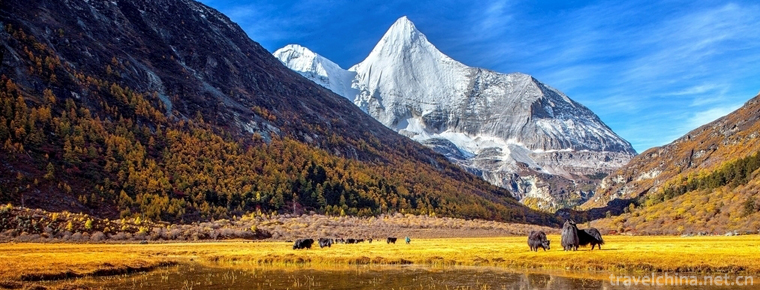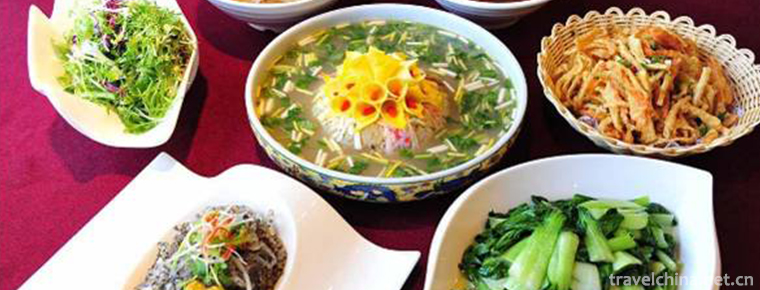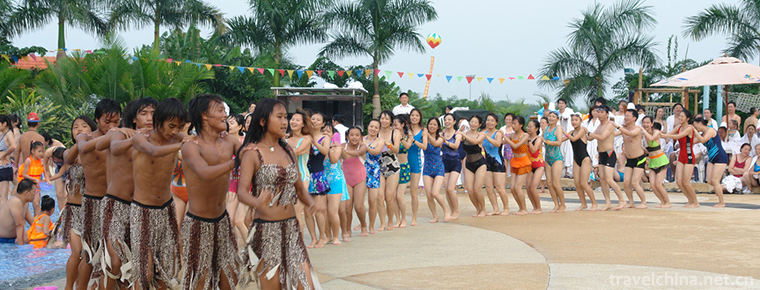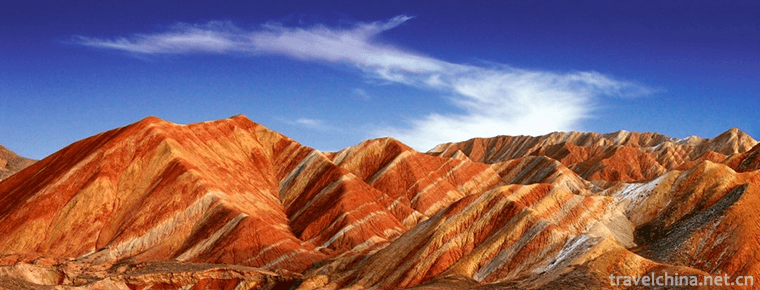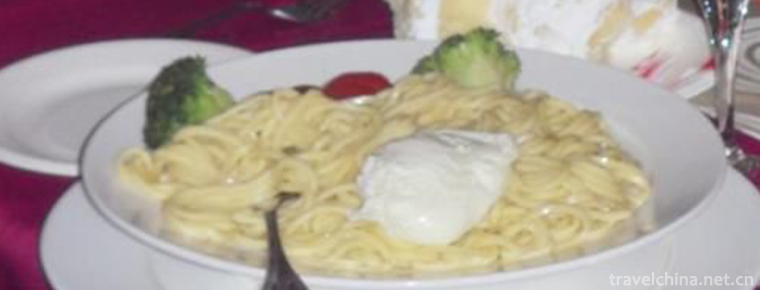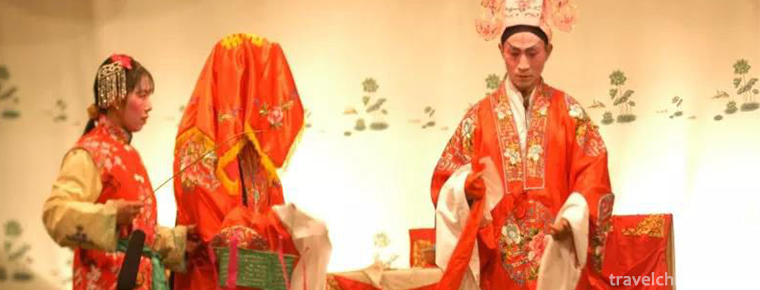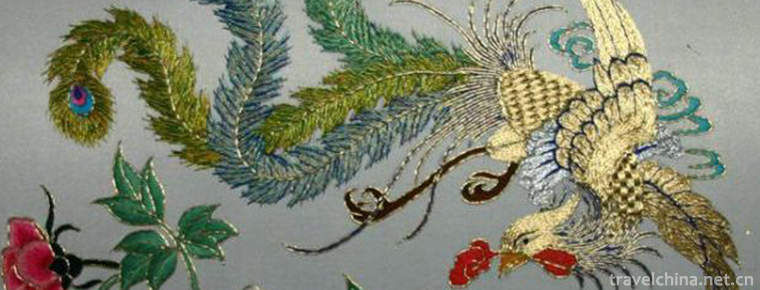Subashi Buddhist Temple Site
Subashi Buddhist Temple Site
Subashi Buddhist Temple Site , also known as Zhaohuili Temple, is located in the south foot of the Queletag Mountains in the northeast of Kuqa County, Xinjiang. It is a national key cultural relic protection unit. The Subashi Buddhist Temple site is divided into two temples, East and west, on both sides of the Tongchang River. The East Temple has been destroyed and remains of temple pagodas and monasteries have been preserved. Built of adobe, there are three tall towers. The West Temple is also built of adobe. There are still remnants of the monastery and several tall towers. On the North side, there are a row of Buddhist caves with Buddhist statues and inscriptions on the walls of the caves. Coins of Han, Southern and Northern Dynasties and Tang Dynasty, copper, iron, pottery, woodwork, murals, clay statues of Buddha, as well as wooden slips and scraps of paper written in ancient national characters have been unearthed. An ancient tomb was also found in the temple.
On June 22, 2014, at the 38th session of UNESCO World Heritage Committee in Doha, Qatar, the Subashfo Temple site was successfully listed on the World Heritage List as a site of the Silk Road: Road Network of Chang'an-Tianshan Corridor, which was jointly applied for by China, Kazakhstan and Kyrgyzstan.
geographical position
Subashi Buddhist Temple is located at the south foot of Qaldag Mountain, 20 kilometers northwest of Kuqa County Town, Aksu District, Xinjiang Uygur Autonomous Region. On the impact platform of Kuqa River between Olagas Village and Langan Village, Age Township, the northern Iceletag Mountain and the southern sand gravel gobi. The geographic coordinates of the site are 83 degrees 02'07 -83 degrees 03'47, 41 degrees 51'07 -41 degrees 52'00, and the altitude is 1250-1280m.
Kuqa County is the territory of Qiuci, a famous oasis kingdom in the Western Regions during the Han and Tang Dynasties. It is an important place on the Silk Road which links the economic and cultural exchanges between the East and the West.
Site structure
Subashi Ancient Temple is a Buddhist monastery site in the Wei and Jin Dynasties. Its remnants are magnificent. It is divided into two temples, East and west, and distributed on both sides of Tongchang River, looking at each other.
The whole site is centered on the Buddhist pagoda, surrounded by temples, caves, palaces, monasteries and other buildings, which are well preserved. The river runs across it. The ruins are distributed on the mounds on both sides of the river. They are called Xisi and Dongsi. The main buildings are concentrated in Xisi.
Toji
Dongsi Site is distributed on the ridges on the East Bank of Kuqa River, and the site is irregularly distributed. Eastern temple is built on the hill, the plains have been destroyed, the houses and pagoda temple sites are all Adobe buildings, the walls are more than 10 meters high, there are heavy buildings. There are three tall towers in the city, which are quite magnificent. The northernmost one stands halfway up the hill, overlooking the entire monastery site; most of the remains are concentrated on the rugged riverbanks. The site is about 500 meters in length from north to South and 140 meters in width from east to west. It is mainly composed of three Buddhist pagodas in the north, middle and south. The South pagoda is well preserved. The pagoda is round and adobe-built. The top of the pagoda is domed. There is a circle of column holes in the middle of the pagoda. There may be wooden bones in the middle of the pagoda. There are walls around the pagoda. There are more than 10 Buddhist niches on the wall.
West Temple
Xisi Site is located on the West Bank of Kuqa River. Most of the sites are well preserved. The site is 700 meters long in North and South and 190 meters wide in East and west. It is mainly composed of Three Pagodas in the north, middle and south, Buddhist temples and temples in the south. The North Tower is surrounded by Buddhist caves, with remnants of murals and inscriptions of Guziwen. In the West temple, there is a small wall at the breaking rock, which is square, about 318 meters in circumference. It is also built of adobe, with a residual height of more than 10 meters. There are many tall towers on the site, and a Buddhist cave in the north. The walls are carved with Guziwen and Buddhist figures. The Central Tower is well preserved. In 1978, the Kuqa County Cultural Relics Department unearthed a beautiful woman's skeleton, baby's bones and other funerary objects at the base of the tower. They are now stored in the Kuqa Qiuci Museum. The Buddhist Hall is located in the central part of the site, with a circumference of more than 300 meters. It consists of a Buddhist pagoda, a palace and several houses. The monastery in the south of the site is magnificent. Most of its architectural remains are exposed to the ground, and the site is slightly square. The temple is surrounded by walls. The east wall and the southeast wall have collapsed, while the west wall and the north wall are well preserved.
Remains of cultural relics
Coins from the Han, Southern and Southern Dynasties and Tang Dynasty have been unearthed. Silver coins from the Persian Sassanian Dynasty of Cous II, copper, iron, pottery, woodwork, murals, clay statues of Buddha and Shelly boxes with musical and dance images have been unearthed. In addition, wooden slips and scraps of paper with ancient national characters were found.
In May 1978, a tomb was found in the area of a pagoda temple. Character murals and inscriptions on the murals were also found at the monastery site. All these new discoveries indicate that this group of buildings existed as early as the Eastern Han Dynasty, and the Tang Dynasty was one of the most prosperous Buddhist temples in the King of Qiuci.
Site value
As the largest existing Buddhist cultural site in Xinjiang, Subashi Buddhist Temple has been used for nearly a thousand years in history. It enjoyed a high reputation on the Silk Road in the Han and Tang Dynasties. From the Wei and Jin Dynasties to the Tang and Song Dynasties, it was one of the important cultural centers in the Western Regions and played a very important role in the cultural exchanges between the East and the West. The Buddhist Temple site has high historical value, artistic value, scientific value and social value. Its construction technique basically covers different construction forms of earthen sites, and is a typical representative of earthen sites in arid areas of Northwest China and even in Central Asia.
History of Cultural Relics Development
Despite nearly a thousand years of abandonment, the remains of the Subashi Buddhist temple in the sun are still shocking. It stands on the vast Gobi beach, reflecting the golden light of the tall pagoda, silently telling people about the once brilliant.
Subashi Buddhist Temple was built in the Wei and Jin Dynasties. One of the three great translators of Buddhist scriptures in ancient China, Guzi monk Jiu Morosh, once opened the altar to lecture on Buddhist scriptures. The Temple flourished in Sui and Tang dynasties. There were as many as 10,000 monks, and the incense was very strong. Xuanzang of Tang Dynasty went west to Tianzhu to take his way through the temple and stayed there for more than two months. In the mid-seventh century (658 A.D.), after the "Anxi Capital Guard House" was moved to Guizi in the Tang Dynasty, the elite monks gathered in the Mainland. The Buddhist affairs of the temple flourished, the bells and drums of the morning and the evening were twinkling, and the flames of war continued until the ninth century, when it was destroyed by fire. In the 14th century, after Islam entered the Tarim Basin, the temple was completely abandoned.
Historically, the site of the Buddhist temple has been called the Queli Temple, the Queli Temple, the Zhaohuili Temple and so on. It is now called the Subashi Buddhist Temple site, commonly known as the Subashi ancient city.
Subashi is Uygur, meaning "head of water" or "longkou". The site is the Buddhist cultural center of Guizi and even the Western Regions from Wei, Jin to Tang Dynasty. After thousands of years of wind and rain erosion and the excavation and destruction of foreign expeditions, it is now totally different, but the existing ruins and pagodas still show the grandeur and grandeur of the past.
Archaeological excavation
Subashi Buddhist Temple site is divided into two temples, East and west, with a total area of about 180,000 square meters. It is the largest Buddhist Temple site found so far in Xinjiang. There are Buddhist temples, pagodas and statues in the East Temple; Buddhist temples in the West Temple are large in scale and square earth pagodas are well preserved; there are 17 Zen caves in the north, which have peculiar shapes and some murals and stone inscriptions of ancient turtles. The site has also found precious cultural relics such as Tang Dynasty coins, Persian silver coins and Sherley boxes with music and dance images. In 1978, a tomb was excavated at the base of the central pagoda of the West Temple. There were female corpses and funerary objects unearthed. They are now hidden in the Kuqa Museum. It is still a mystery why the female corpses were buried at the bottom of the pagoda of the Buddhist temple.
The archaeological achievements of Subashi Buddhist Temple site are abundant. At the beginning of the 20th century, the Japanese expedition team Guangrui Dagu excavated a Sari box in the West Temple, which is now hidden in the Tokyo Museum of Japan; in 1907, a circular Sari box was also found in Berchhe, France; and in 1958, Mr. Huang Wenbi, Peking University, found a large number of pottery, bronze money, iron ware, wooden slips and scriptures in the West Temple Hall.
Development and Construction
Protection Project of Subashi Buddhist Temple Site in Xinjiang
The project of protecting Subashi Buddhist temple ruins in Xinjiang, approved by the Chinese government, started in April 2011. Soon after, the steel net fence will form a barrier around the ruins to help the ancient temples, which have been eroded by sand and wind for thousands of years, refuse to be disturbed by uninvited visitors.
According to Tulhon Sulaiman, the head of the Kuqa County Cultural Relics Bureau in Xinjiang, more than 89 million yuan of state and local financial investment will be used for infrastructure construction of Subashi Buddhist Temple sites, including the construction of cultural relics exhibition halls, road construction and protection fences. The project is expected to be completed in full within the year.
Xinjiang Kuwait-Russia Railway Extension Construction Avoiding Subashi Buddhist Temple Site
In order to speed up the development of coal resources in Kuqa County, Aksu area, improve the coal transportation capacity of Ohobrak Coal Mine and further accelerate the pace of economic development in minority areas, with the attention and support of the People's Government of Xinjiang Uygur Autonomous Region and the Ministry of Railways, a railway branch line from Kuqa to Ohobrak Coal Mine is planned to be built from May 2008 to October 2009 .
In the preliminary plan of Kuwait-Russia Railway Extension Line, the railway Extension Line will pass between the West Temple and the East Temple of Subashi Buddhist Temple Site, the key cultural relic protection unit in the country. However, the cultural relics authorities have proposed that this plan will have a serious impact on the Subashi Buddhist temple site.
The construction of Kuwait-Russia Railway Extension involves the protection of Subashi Buddhist Temple sites, which has been highly valued by the main leaders of the Party Committee of the Autonomous Region and the people's government of the Autonomous Region and relevant departments. Song Airong, Standing Committee of the Party Committee of the Autonomous Region, visited the Subashi Buddhist Temple site on a special trip, and asked the railway design department to take effective technical measures to protect the cultural relics and monuments in accordance with the relevant laws and regulations of the state for the protection of cultural relics. Dai Gongxing, Vice Chairman of the Autonomous Region, asked the railway construction and design units and the Cultural Relics Bureau of the Autonomous Region to work out a design plan to ensure the safety of cultural relics and submit it it to the relevant state departments for approval. Experts specially organized by the State Administration of Cultural Relics have evaluated and demonstrated the proposed amendments reported by the Bureau of Cultural Relics of the Autonomous Region. Finally, the State Administration of Cultural Relics, the Ministry of Railway and the People's Government of the Autonomous Region gave approval to the re-optimized Kuwait-Russia Railway Extension concerning the design of Subashi Buddhist Temple sites.




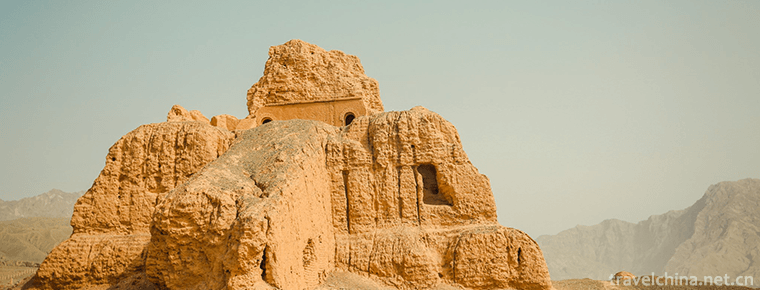
-
Daocheng County
Daocheng county is located in the southwestern edge of Sichuan Province, south of Ganzi. Located in the southeast of the Qinghai Tibet Plateau, the eastern side of Hengduan Mountains..
Views: 101 Time 2018-10-12 -
Old Beijing fried Morchella
The most famous famous food in Beijing is old Beijing tripe and Beijing roast duck. As for the oldest and most prosperous snacks in Beijing, belly burst is definitely the best among them..
Views: 162 Time 2018-10-27 -
shui xi of Luo Yang
shui xi of Luo Yang/Luoyang Water Banquet is a traditional feast with characteristics in Luoyang, Henan Province, which belongs to the Henan Cuisine Department..
Views: 224 Time 2018-11-26 -
Jiahe City Hot Spring Valley
Jiahe City Hot Spring Valley is located in Jiahe City, Nanwu Avenue, northeast of Nanning City. It is about 13 kilometers away from Nanning International Convention.
Views: 378 Time 2019-01-21 -
Mingyue Gorge Scenic Area
Mingyue Gorge is located in the eastern section of Jialing Jiangxi Lingxia, Guangyuan, Sichuan Province. It covers an area of 6.1 square kilometers and is about 33 kilometers.
Views: 145 Time 2019-02-07 -
Zhangye Danxia National Geological Park
Zhangye Danxia National Geological Park is the only Danxia landform and color hilly landscape complex area in China. Located at the northern foot of Qilian Mountains, 30 kilometers south of Linze Coun.
Views: 186 Time 2019-03-16 -
Baxian longevity noodles
Make it with Udonghua noodles. With turtle, old turtle boiled soup, turtle has a nourishing role, old turtle represents longevity. Take shrimp, squid, sea cucumber, black fish balls.
Views: 174 Time 2019-03-27 -
Guangchang Meng Opera
Guangchang Mengxi Opera, a traditional local drama popular in Guangchang County, Jiangxi Province, is one of the national intangible cultural heritage..
Views: 111 Time 2019-05-01 -
Han Embroidery
Han embroidery, one of the traditional embroidery techniques with Chinese characteristics, is based on Chu embroidery, which combines the merits of various .
Views: 172 Time 2019-05-02 -
Miao New Year
Miao year, the first year of the Miao calendar, is the most solemn traditional festival of the Miao people. The time spent in different areas varies from September to the first month of the lunar cale.
Views: 94 Time 2019-06-05 -
Location of Yibin
Yibin City is located in the south of Sichuan Province, at the junction of Sichuan, Yunnan and Guizhou provinces, and the confluence zone of Jinsha River, Minjiang River and Yangtze River. It spans 27 ° 50 '- 29 ° 16' n and 103 ° 36 '- 105 ° 20' E. The cit.
Views: 363 Time 2020-12-18 -
Guangan primary industry
In 2019, the sown area of grain in Guang'an City is 287000 hectares, and the total grain output is 1.8 million tons, an increase of 1000 tons or 0.04%. Among them, the rice output was 1.047 million tons, down 0.4%; the corn output was 448000 tons, an incre.
Views: 160 Time 2020-12-19
